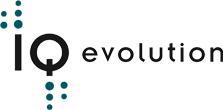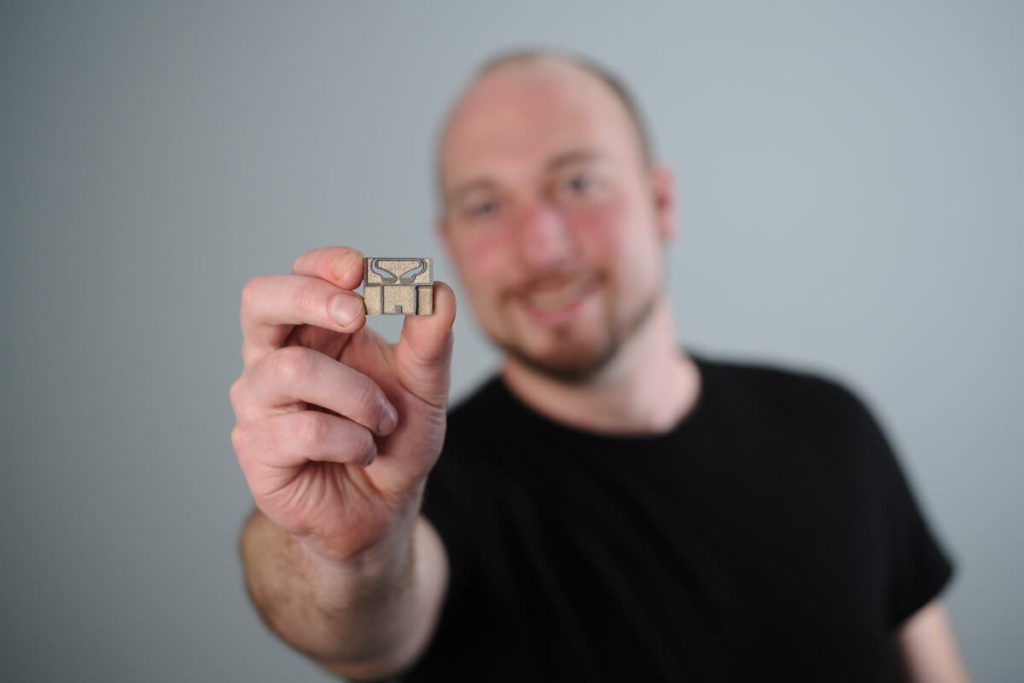3D printing of metals
The Laser Powder Bed Fusion (LPBF)
The starting material is a metal powder, such as stainless steel, aluminum, or titanium. In an insulated chamber the metal powder is applied in thin layers of approx. 30 μm (0.03 mm) on a substrate plate. Based on the data of the CAD model, the laser moves over the powder layer and melts it according to the calculated areas, creating a homogeneous metal structure. The substrate plate is then lowered again to apply the next powder layer. The laser becomes active again and melts up precise areas of the metal powder according to the CAD data. In the process, the lower layers are bonded by laser melting. Layer by layer, the tailor-made product or a whole series of products is created.
The remaining powder is removed without residue at the end of the building process. Step-by-step laser melting allows several metal layers and their advantages to be combined. This is why the LPBF process is very advantageous, for example, in the development of highly efficient cooling structures. The selective Laser melted components have largely the same characteristics as the series material. In order to meet the highest dimensional and quality standards, the components can be reworked according to requirements. In contrast to classical milling or joining of single metal plates, the complexity and the level of detail does not increase the costs of production. The manufacturing costs are only determined by the material and volume used.
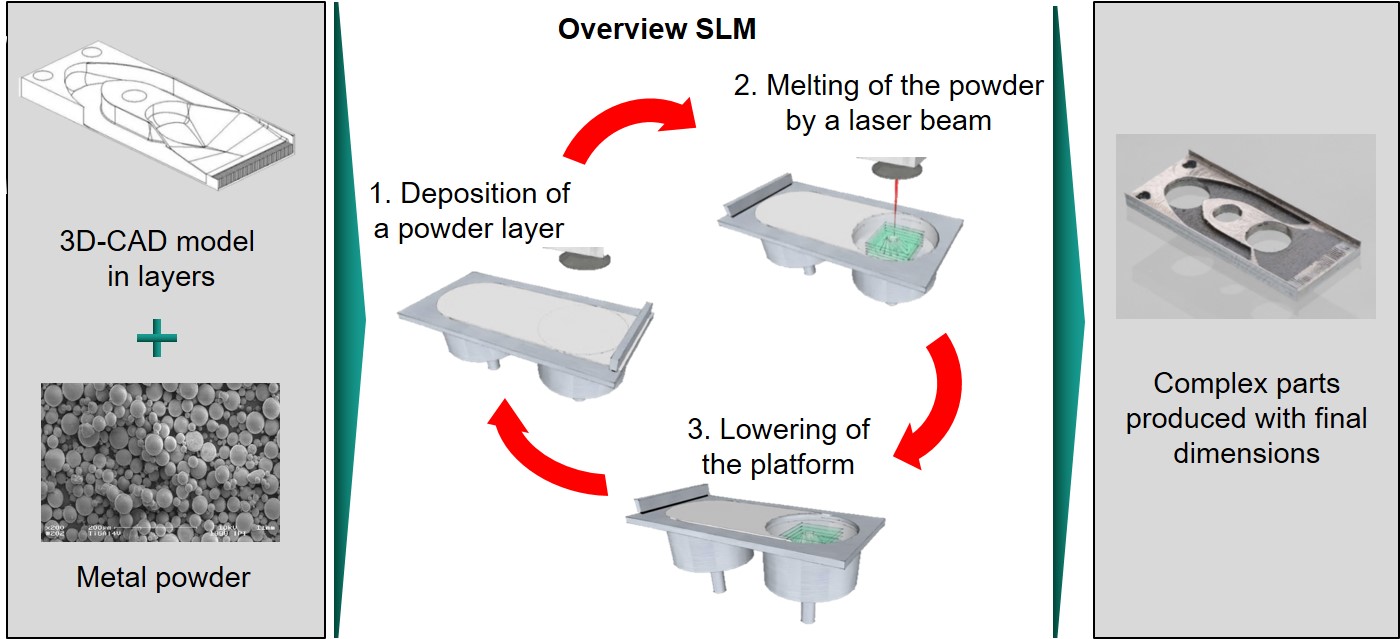
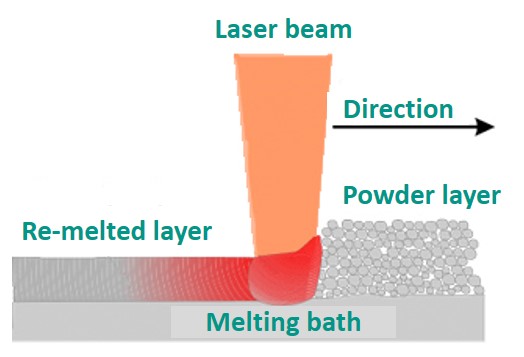
Laser beam
The width of the structures depends on the beam diameter, the grain size of the powder, the layer thickness, the speed and power of the laser beam, as well as on the material properties of the metal powder and on the selected track pitch between the individual tracks of the laser beam.
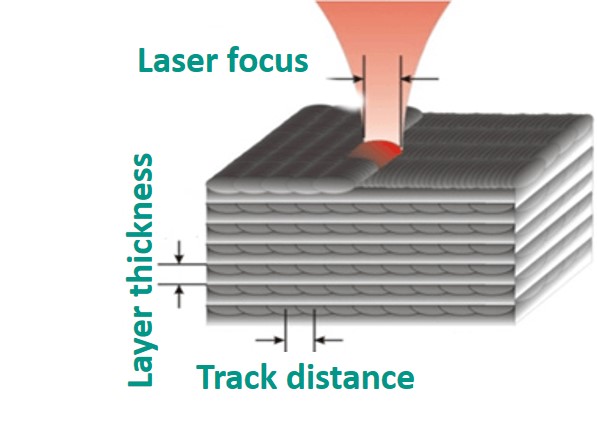
Process
Where the laser beam hits the powder, the powder melts and then solidifies. The size of the beam diameter determines the dimensions in the LPBF process. The laser melted material has a density of 98% to almost 100%.
The Advantages of 3D laser metal printing
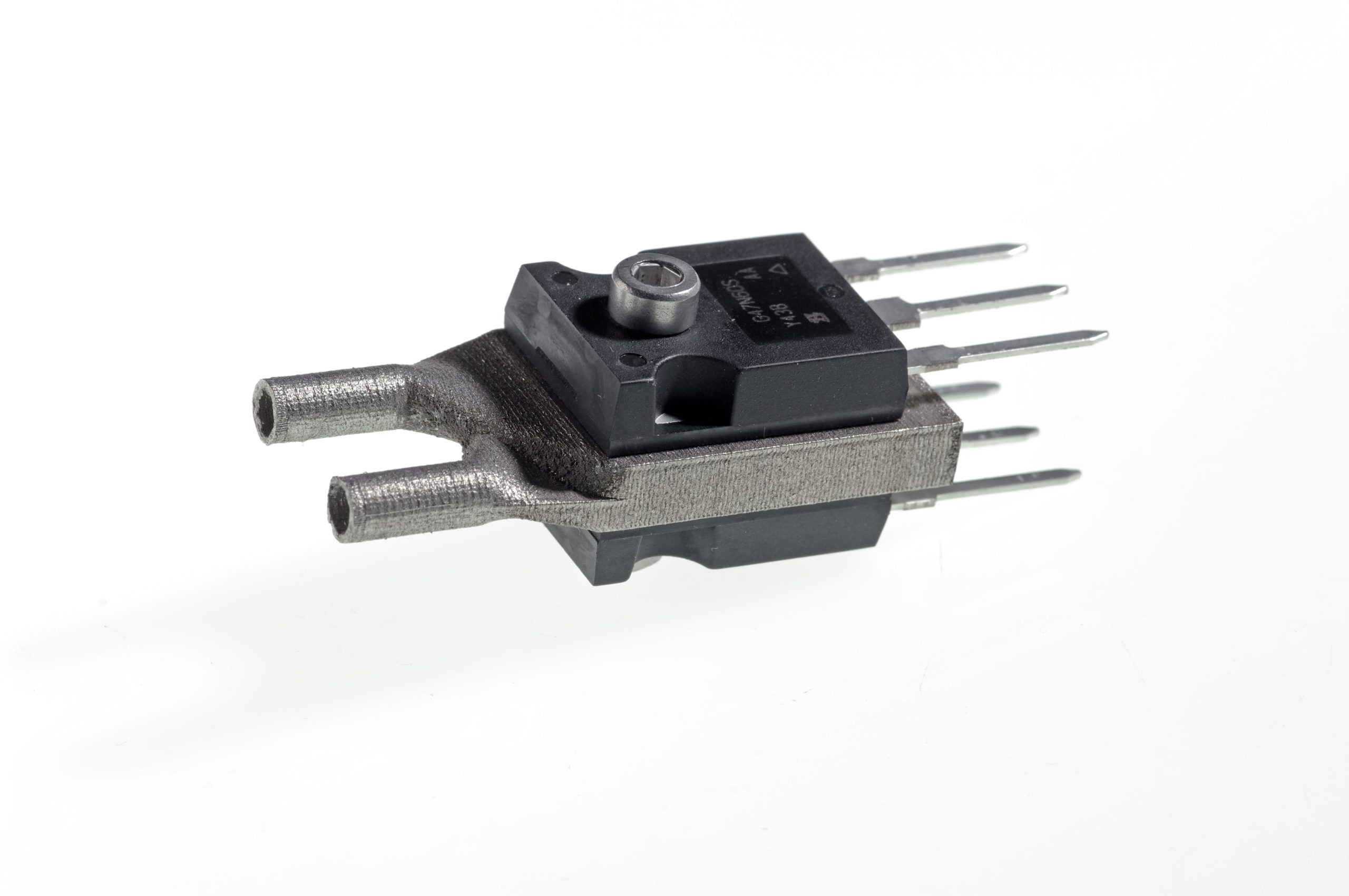
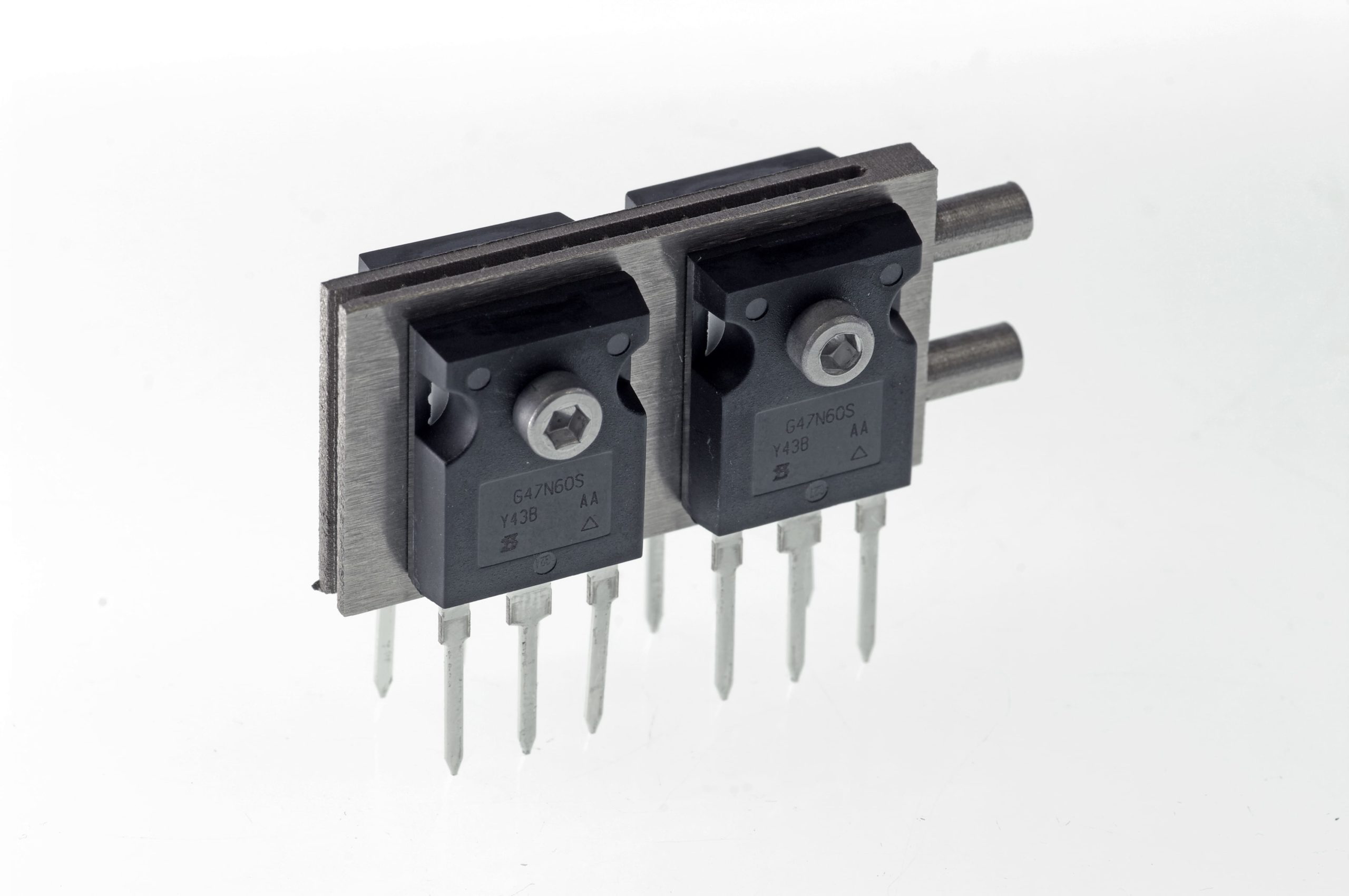
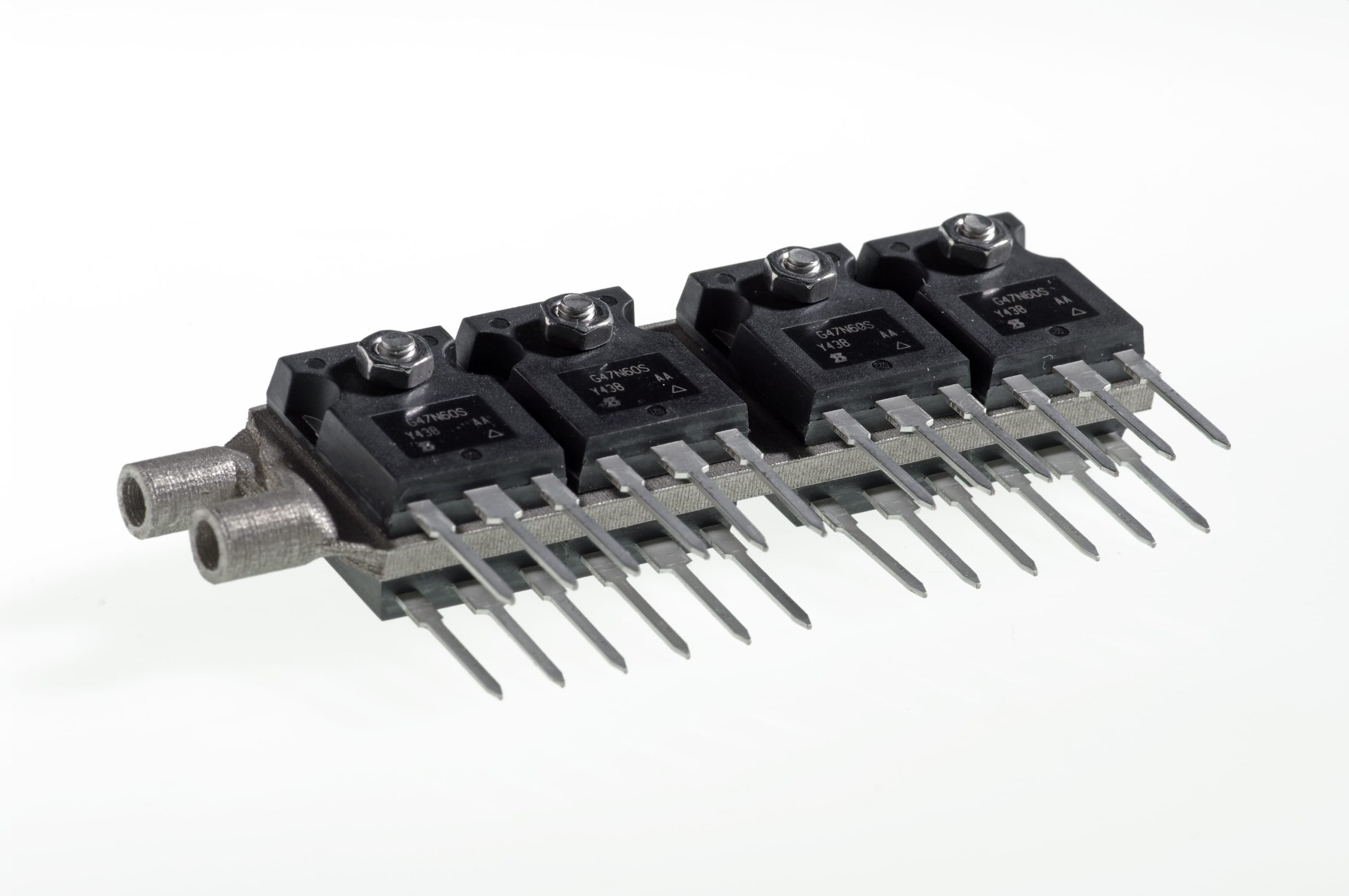
Fields of application
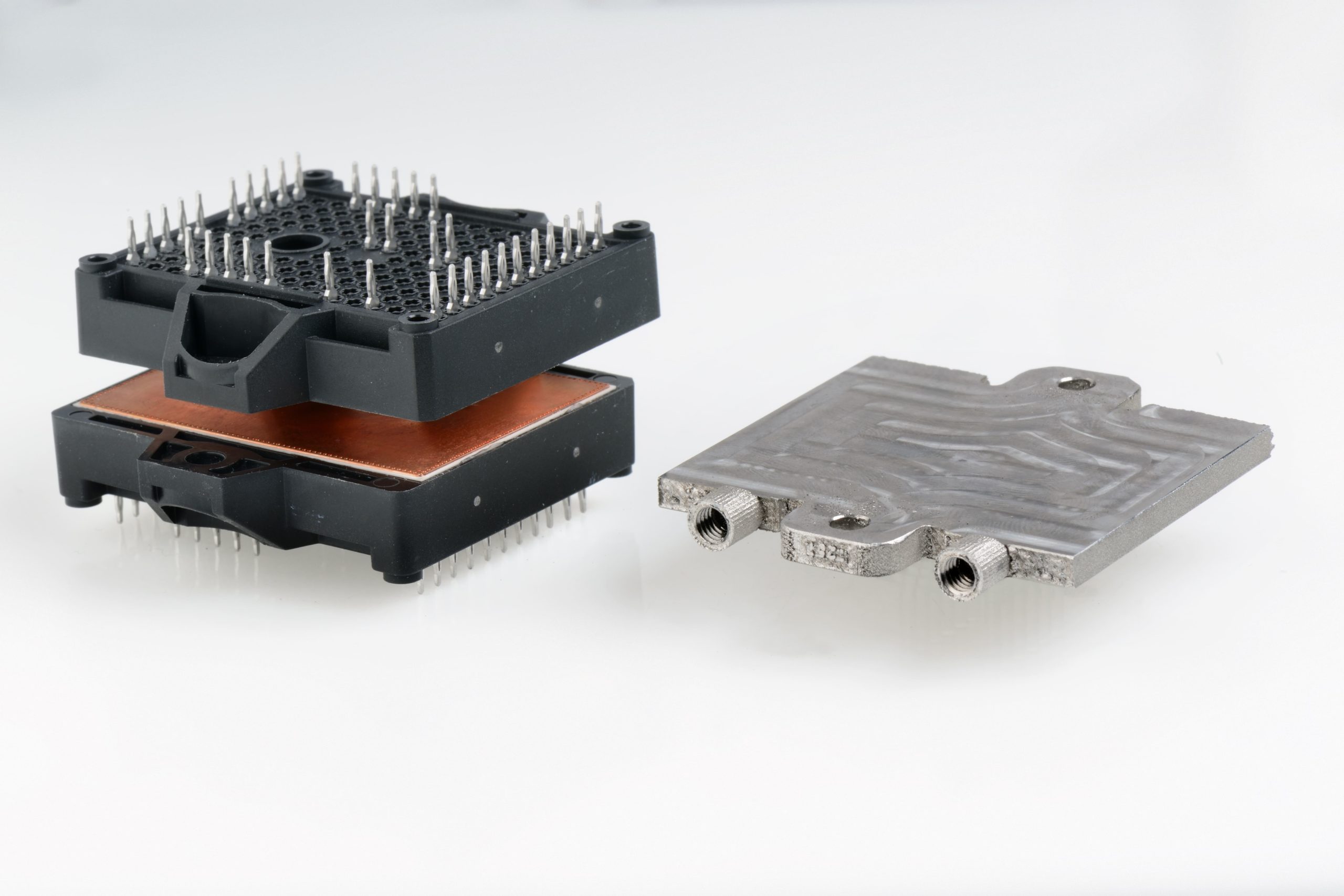
IQ-Big 53, individual parts
- Laser cooling:
Cooler for laser diode stacking with matched CTE - Cooling power electronics:
IGBTs, MOSFETs, inductors, power modules, transistors, capacitors - In- and On-board cooling:
PCB cooling, multilayer boards, printed PCB
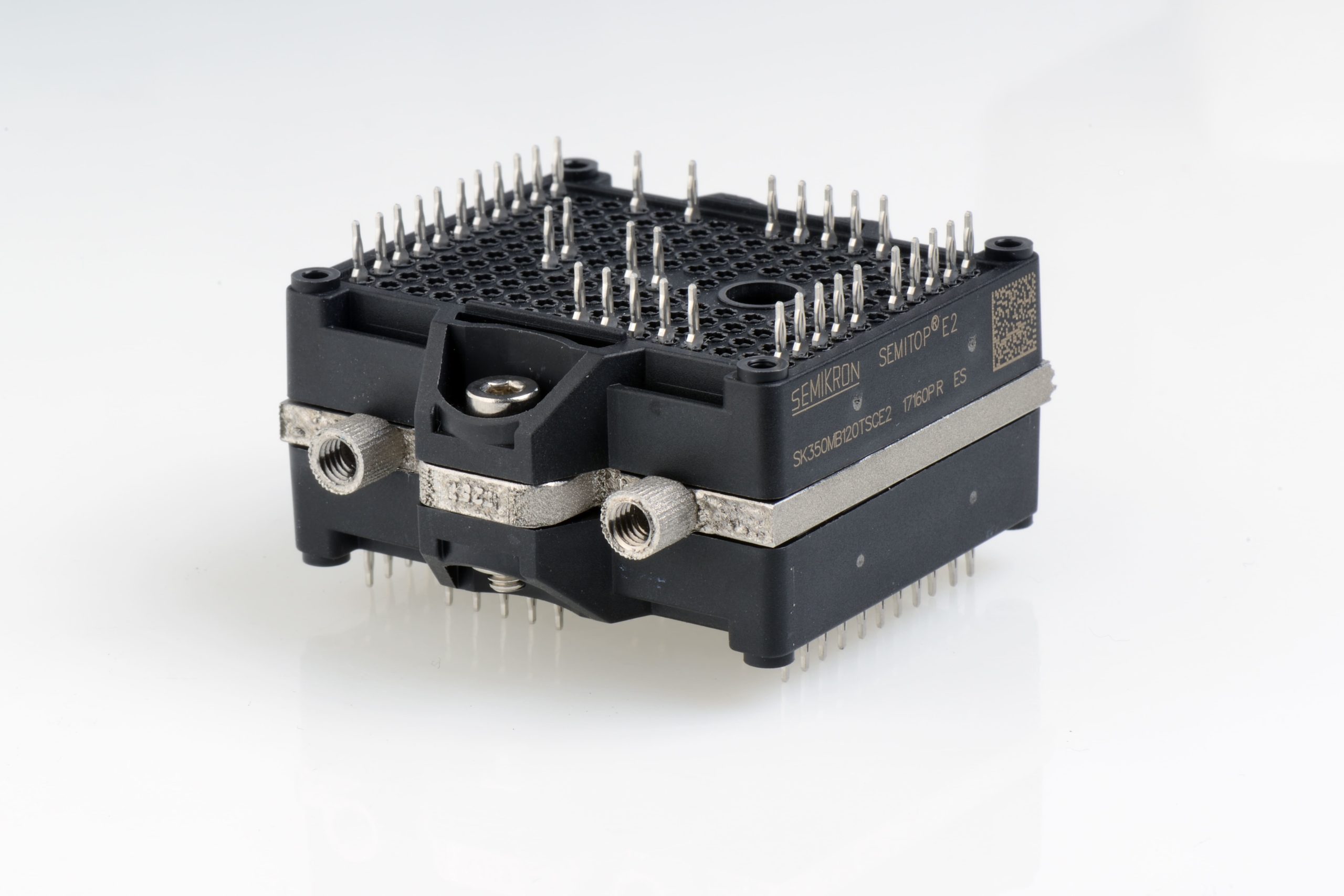
IQ-Big 53, assembled
- Smallest components and nozzles:
Pitot tubes, cooled wire feeder - Automotive Engineering:
Power convertrer, hyper-charger, onboard charger, converter, inverter

We develop solutions to deliver real efficiency improvements in production processes
– Dr. Ing. Thomas Ebert, CEO IQ evolution GmbH –
Benefit from this technology
Many components or product parts of IQ evolution are developed and manufactured on the basis of Laser Powder Bed Fusion (LPBF). In order to use selective Laser melting as an economical manufacturing process and to benefit from its advantages, many years of experience and specialist knowledge are required. In cooperation with IQ evolution, individual problems in design and development can be solved and the process-specific advantages can be used in production.
Rapid Prototyping: Together with our customers we develop prototypes for first test purposes within a few days. From component design to production and finishing, we implement your projects that are not possible with conventional methods – neither in terms of size in the micrometer range nor in terms of the complexity of the shapes. The designs can then be produced in series quickly and efficiently without the use of expensive tools. Selective Laser Melting and our engineers make this technology work for you
